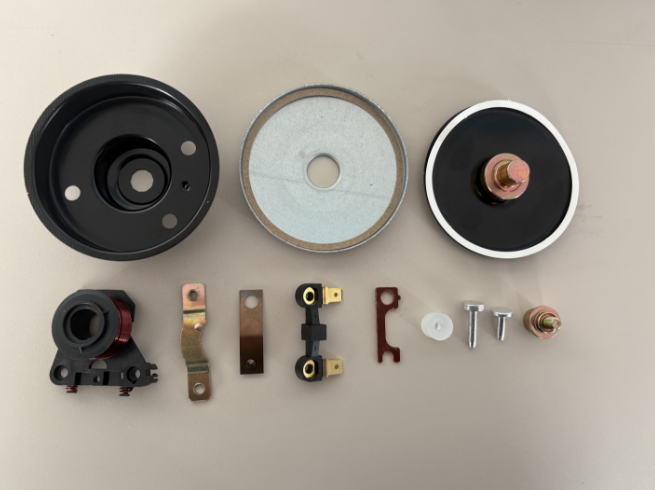Problem: Your car horn is broken—It doesn’t beep.
Aggravation: You can’t honk at people who cut you off.
Solution: You need to know how your car horn works so you can fix it and have a loud horn to honk at jerks who cut you off.
Automotive horns are vitally important for safety, letting pedestrians and other drivers know it’s time to “get the hell out of my way.” The inner workings are important to understand if you want to have a horn that works properly.
Stay with me now as I take you through the inner workings of automotive horns, from basic mechanics to the various things that mess up the sound.
The Basic Function of an Automotive Horn
At its core, the automotive horn is a signaling device. It’s there to tell other people that you’re there too. It’s part of the broader *automotive signaling system* that makes us talk to each other when we’re using our cars or walking around unaware of each other. We need to make loud sounds to get each other’s attention. That’s why we have a horn. It’s all about car safety and public safety. We use it to stop us from running over people or crashing into things because we’re not paying attention.
You can also use your horn for non-emergency purposes, like telling people what you’re about to do, or asking for their attention. What kind of sound comes out of it depends on the kind of horn you have. But the deal is that the beep you’re hearing is really just the sound of saying, “Hey! Look out!”
Key Components of an Automotive Horn
The automotive horn is made of several parts working together to make our beep sound. These include the diaphragm, coil, electromagnet, electrical circuit, and the horn housing.
1. Diaphragm: It’s a thin, little metal disc that vibrates when you press on the horn button.
2. Coil: This is an electromagnet that works with the diaphragm to make the sound that we hear.
3. Electromagnet: This little gizmo creates a magnetic field, so the diaphragm keeps doing its thing.
4. Electrical Circuit: We use an electrical circuit, hooked up to your car’s battery, to make your horn go. This current makes the electromagnet do its thing, and that’s what gets the diaphragm spanking, so it makes the noise.
5. Horn Housing: Whoops, it sounds like some of your noise is coming out the back. You need a horn housing to help direct all that sound straight at the other driver.
If you want your horn to go beep, beep, you have to make electrical energy go through all those, and your horn makes noise.
The Mechanism Behind the Sound Production
You crank up your horn when you push the button. When you do that, a bit of electricity comes out of your battery and flows through some wires in your car. That’s what turns the horn on. This electric current makes the electromagnet do something crazy awesome. It makes it pull in the diaphragm.
When the diaphragm gets pulled by the electromagnet, it makes noise. When you hit the button, the diaphragm starts vibrating like crazy. It starts compressing and releasing air really fast. And that’s where the noise you hear comes from. The speed it vibrates and how much air it moves both change how the noise sounds. The sound waves then travel down your horn housing and get louder and louder until people can hear you honking your horn a mile away. Okay, not a mile, but you get the point.
Types of Automotive Horns
There are several types of automotive horns, each with distinct characteristics:
1. Electric Horns: These are the most common kind. They use magnets to make noise. Electric horns are small, cheap, and easy to fix. They sound okay.
2. Pneumatic Horns: These horns use gas to make noise. They are way louder than electric horns. You probably hear these on big vehicles like buses and trucks. Pneumatic horns are great for getting attention, right now.
3. Air Horns: These are the horns that you hear every few minutes when a truck drives by. Fire trucks and other emergency vehicles might have an air horn too. They sound deep and loud.
Each type of horn offers varying levels of volume, tone variations, and sound pressure level (SPL), making them suitable for different vehicle types and use cases.
How Automotive Horns are Powered
The horns are connected to your car's battery. You’re really dealing with electricity here. It can be pretty dangerous if you don’t know what you’re doing. I’ll teach you how to install a horn later. Just know you only have to tow your car to the mechanic once. You’ll want to avoid that.
When you press the horn, it makes an electrical connection and draws any necessary extra electricity right out of your car’s battery. That electrical signal wakes up the electromagnet and does all of this stuff. Always make sure your car’s electrical system is in good shape if you want controlling your horn to be a sure thing.
Factors Affecting the Sound of the Horn
Several factors can impact the sound quality and effectiveness of your vehicle's horn. These include the horn material, size, frequency, pitch, and durability.
1. Horn Material: The materials used to construct the horn, such as metals or plastic, influence how the sound resonates.
2. Size: Larger horns generally produce louder sounds, while smaller ones may have a higher-pitched tone.
3. Frequency and Pitch: The frequency at which the diaphragm vibrates determines the horn's pitch. Lower frequencies produce deeper sounds, while higher frequencies create sharper tones.
4. Durability: The longevity of the horn depends on the quality of materials and construction. Exposure to harsh weather conditions, vibrations, and wear can affect the horn’s performance over time.
Regular maintenance and proper selection of materials are essential to maintaining the horn’s sound quality.
Safety Regulations and Standards for Automotive Horns
Automotive horns are subject to various safety regulations and standards, ensuring they meet certain noise level limits and reliability criteria. These regulations vary by region but generally aim to reduce unnecessary noise pollution while ensuring the horn is effective in alerting other road users.
Manufacturers must comply with standards set by organizations like ISO, ensuring that their horns adhere to required decibel levels and durability. Horns must also pass testing for safety, reliability, and performance to meet road safety requirements. Furthermore, the horn's noise level regulations ensure that the sound does not exceed limits that could cause hearing damage or environmental nuisance.
Why the Quality of Automotive Horns Matters
The quality of automotive horns is crucial for several reasons. High-quality horns provide a reliable and consistent sound, ensuring that drivers can effectively communicate their presence on the road. A durable, well-made horn is also less likely to fail over time, reducing the risk of accidents.
Additionally, horns from us like FHL /GBSY /JS-TECH offer cost-effectiveness without compromising on OEM specifications. This means you can get a horn that delivers comparable performance to first-tier brands like DENSO, HELLA, and BOSCH, at a more affordable price. Furthermore, customizable logos and a 2-year quality guarantee give businesses an edge in building their own brand with confidence.
Conclusion
Understanding how automotive horns work is essential for choosing the right product and ensuring optimal performance. From the basic components to the factors that influence sound, this knowledge helps ensure safety and reliability on the road.


